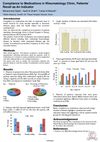Search
for
Sort by
Research
30-60 / 1000+ resultsresearch Efficacy Comparison of Photobiomodulation Devices in the Treatment of Androgenetic Alopecia
research Efficacy and Safety of ENERGI-F701 Solution Versus 2% Minoxidil Solution for Female Pattern Hair Loss: A Phase II, Multi-Center, Randomized, Double-Blind, Head-to-Head, Parallel Trial
research Spatial Transcriptome Profiling Reveals TGFβ-2 in Hair Follicle Progenitor Cells Is a Potential Driver of Androgenetic Alopecia
research Use of Low-Dose Spironolactone in Female Pattern Hair Loss in a Specialty Alopecia Clinic
research Computer Vision AI-Based Androgenetic Alopecia Analysis Using a Novel Mobile Web App
research ESDR589 – Platelet Rich Plasma Combination Therapies for Treatment of Androgenetic Alopecia: A Systematic Review
research Vellus-To-Terminal Hair Follicle Reconversion Does Occur In Male Pattern Balding In A New Humanized Mouse Model Of Androgenetic Alopecia And Is Promoted By Minoxidil And PRP
research ESDR564 – Vertex and Occipital Intermediate and Terminal Hair Follicles from Androgenetic Alopecia Patients are Differentially Affected by Testosterone Ex Vivo
research The Role of Rare Variants in Male-Pattern Hair Loss: Analysis of Whole Exome Sequencing Data in the UK Biobank
research ESDR072 – COVID-19 and Male Androgenetic Alopecia: Systematic Investigation of a Potential Epidemiological and Genetic Association
research Poor Perifollicular Vascularization Is Associated With Nutrient Insufficiency and a Quiescent Metabolic Phenotype in Intermediate Hair Follicles From Patients With Female Pattern Hair Loss
research Adverse Effects at the Level of Marginal Periodontium Secondary to Finasteride Administration
research PSA Concentration Change in Men Taking Low Dose Finasteride and Dutasteride for Male Androgenetic Alopecia

research Prediction of Gain-of-Function and Loss-of-Function Mutations Using Combined Annotation Dependent Depletion
C-scores can help predict gain-of-function and loss-of-function mutations.

research Innate Lymphoid Cells Type 1 May Be New, Non-Antigen-Specific Player in the Pathogenesis of Alopecia Areata
Innate lymphoid cells type 1 may contribute to alopecia areata by damaging hair follicles.

research Oral Targeted Therapy-Induced Cutaneous Toxicity: Life Experience of Patients with Advanced Lung Cancer in Taiwan
More research is needed to understand chemotherapy-induced hair loss and its phases.

research Drugs And Devices In Prevention And Treatment Of Chemotherapy-Induced Alopecia: When And How Should Be Employed
Scalp cooling is recommended to prevent chemotherapy-induced hair loss, but no effective drugs are available.

research Tinea Capitis in Adults: An 18-Year Epidemiological, Clinical, and Mycological Study in Korea
Tinea capitis in adults often leads to misdiagnosis or delayed diagnosis due to atypical symptoms, requiring careful examination for proper treatment.

research Compliance to Medications in Rheumatology Clinic: The Patient Recall as an Indicator
Many patients in the rheumatology clinic adjusted or stopped their medications due to side effects.

research Age-Related Changes in Human Scalp Extracellular Matrix: Implications for the Hair Follicle
Older women's scalp cells show changes that could contribute to hair thinning.

research Morphogenetic Events in Hair Follicle Heterotypic Spheroids
Researchers developed a method to create artificial hair follicles that may help with hair loss treatment and research.

research 11β-Hydroxysteroid Dehydrogenase Type 1 Inhibition Attenuates the Adverse Effects of Glucocorticoids on Dermal Papilla Cells
Blocking 11β-HSD1 reduces stress hormone damage in hair growth cells.

research Bone Morphogenetic Proteins Are Critical Factors for Hair Follicle Epithelial-Mesenchymal Interactions in Androgenetic Alopecia
Bone Morphogenetic Proteins (BMPs) are important for hair growth, and their decrease due to hormones could lead to hair loss, but adding more BMPs could promote hair growth.
research Prevention and Treatment of Experimental Prostate Cancer in Lobund-Wistar Rats: Effects of Estradiol, Dihydrotestosterone, and Castration
Estradiol and castration reduced prostate cancer development in rats when applied at early stages, but were ineffective after cancer was established.

research The Effects of Benzodiazepines on Hormones in Women with Idiopathic Hirsutism
Benzodiazepines changed hormone levels but did not affect hair growth in women with idiopathic hirsutism.
research Marked Suppression of Dihydrotestosterone in Men with Benign Prostatic Hyperplasia by Dutasteride, a Dual 5α-Reductase Inhibitor
Dutasteride more effectively lowers DHT levels in men with enlarged prostates than finasteride.
research A Mouse Model for the Basal Transcription and DNA Repair Syndrome Trichothiodystrophy
Researchers created a mouse with the same mutation as humans with trichothiodystrophy, showing similar symptoms and confirming the condition is due to defects in DNA repair and gene activity.

research Ozone Interactions with Human Hair: Ozone Uptake Rates and Product Formation
Ozone reacts more with unwashed hair, producing compounds due to scalp oils, which could lower ozone exposure but increase exposure to reaction products.
research The Surgical Management of Extensive Cases of Acne Keloidalis Nuchae
Excision with primary closure is an excellent treatment for extensive acne keloidalis nuchae.